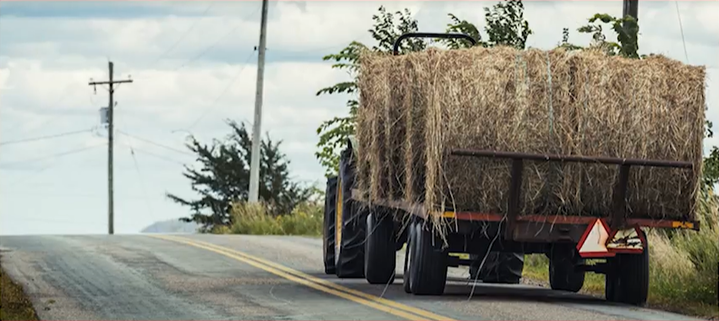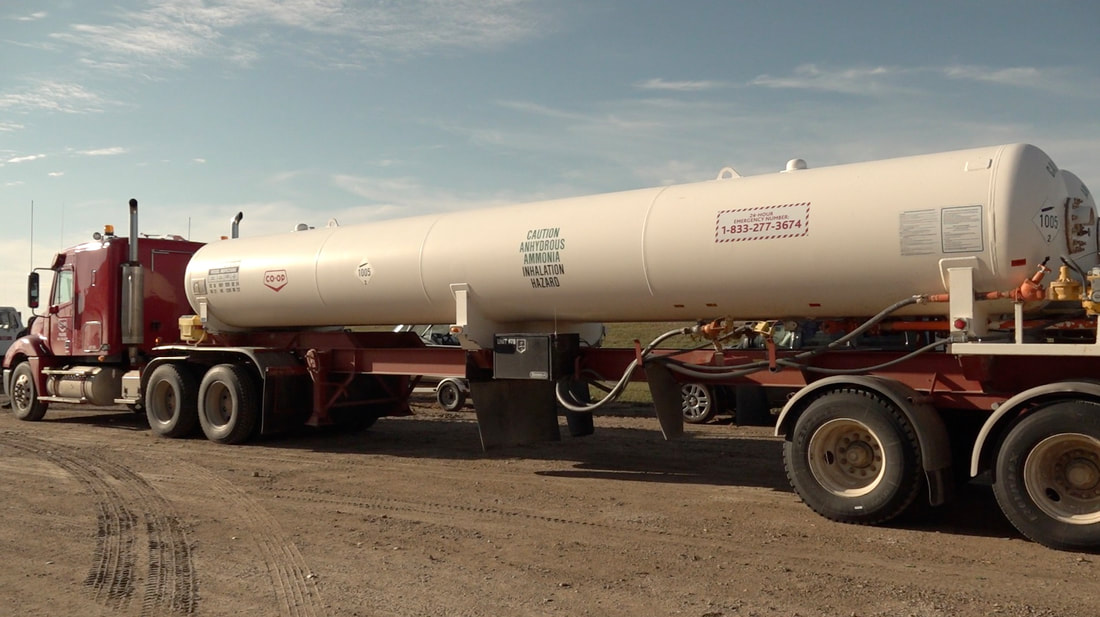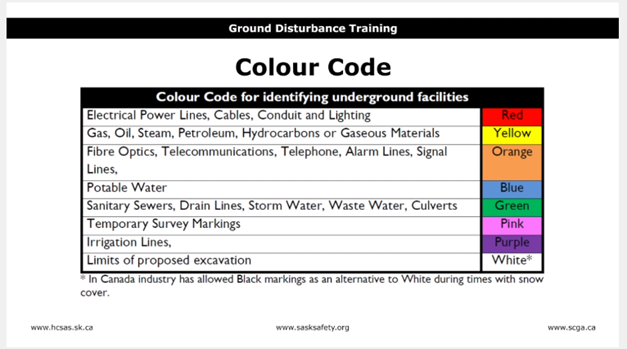|
What steps are you taking to ensure the health and safety of those working with you in your operation this harvest season? - In the video below, John Agioritis, partner at MLT Akins in Saskatoon, shares a safety message and story of a farm in Saskatchewan that was fined $80,000 after a worker was fatally injured.
MLT Aikins LLP - Western Canada’s Law Firm - is a full-service law firm of more than 250 lawyers with a deep commitment to Western Canada and an understanding of this market’s unique legal and business landscapes.
Harvest season in Saskatchewan means you will be sharing the road with farm equipment. The rush to “get it done” before the weather turns cold means early mornings and late evenings for farmers. On highways, rural roads, and even in town, the winding down of farming season will bring large equipment onto public roads. Why is this dangerous? Due to how large farming equipment can be, collisions involving them are more impactful. Between 2016 and 2020, there were 96 collisions involving farm equipment on Saskatchewan roads. Of these 96 collisions, 44 would result in injuries, and eight people lost their lives. Reviewing these numbers, we can see that collisions with farm equipment carry very serious repercussions. What are some special hazards to watch out for? The most obvious one is size and weight. These machines are larger than any other vehicle on the road, making them particularly dangerous obstacles to collide with. Farm machinery can also be deceptively wide and long, with parts protruding, taking up more than one lane width, or even the entire driving surface on more narrow rural roads. Farm equipment may be operated in muddy environments and as a result may carry or track mud and other obstacles onto the driving surface. How do we avoid collisions involving farm equipment?
Passing farm equipment is by far the most dangerous act, putting both the driver and operator in a high-risk situation. On hills, turns, and into the sunlight, maintaining sightlines beyond the machinery is difficult. Farm equipment is also an irregular shape on the road. It is hard for your eyes to properly register, and for your mind to predict the speed and movement. Before passing, ensure you can see many kilometres down the road, and that you have the time and space to pass safely. Here are our top tips for sharing the road with farm equipment:
With kids back to school, summer vacations coming to an end, and farmers working hard in the fields, autumn in Saskatchewan is a time of change. How do you adjust your driving during this busy season? Have you got a story to share? Contact us or post in the comments below! Nitrogen fertilizer usage in Western Canada has increased from 1.6 Million Tonnes to nearly 2.3 Million tonnes in the last decade, and Anhydrous Ammonia (NH3) makes up a large portion of this increase. Anhydrous Ammonia (NH3) is the richest form of nitrogen available for producers. As a fertilizer, it provides essential nitrogen for plants. It is safe to work with NH3 as long as it is stored, transported, and handled properly. Before working with Anhydrous Ammonia, ask your retailer to explain the step-by-step procedures for NH3 application.
Fertilizer Canada recommends these precautions for working with NH3:
Looking for more Agriculture Safety Resources to share with new & young workers? For many people, the phrase “Ground Disturbance” conjures up images of big equipment turning up dirt to build roads or other infrastructure. This is indeed the case; this type of heavy construction recognizably engages in ground disturbance operations. However, many other residential and civil construction projects regularly deal with underground facilities. This means that ground disturbance concepts extend to many popular trades outside of heavy construction. Landscaping, residential projects, other construction fields, and the agriculture industry all actively require awareness of ground disturbance operations. The Saskatchewan Safety Council is proud to announce the latest addition to the Career Safety Education program - “Ground Disturbance for Saskatchewan Workers,” a completely free course aimed at young workers in the province seeking to enter these common trades that deal with disturbing the earth’s surface. Three organizations – The Saskatchewan Common Ground Alliance, Heavy Construction Safety Association of Saskatchewan, and the Saskatchewan Safety Council have collaborated to produce this training course on Ground Disturbance. Course material covers concepts that are directly applicable to ground disturbance operations while also including generalized concepts designed to build a young worker’s awareness in many other fields that work in soil or alongside utility infrastructure. The main objective of the course is to teach students how to properly identify underground facilities while also providing information to help students maintain safe practices when dealing with soil. “New and young workers often find some of their first jobs in sectors that deal with ground disturbance concerns. Every year, we hear statistics of people being injured and sometimes killed in this line of work, but these are not statistics, they are our friends, neighbours, nieces, nephews, and children. Through this multi-agency collaboration and the financial support of the SCGA, we can make sure that every person who needs to take ground disturbance training to learn about the hazards and risks in their work, can do so without barriers.” - Ryan Jacobson, CEO, Saskatchewan Safety Council For employers in industries that frequently engage in ground disturbance operations, a young employee who has taken Ground Disturbance Training will be much better oriented to receive onboarding training than an employee who has not. Many employers in these common industries will recognize the important concepts that the course will introduce. These ground disturbance concepts include Identification of worksite equipment, designation of colour-coded flags and markers, the influence of differing soil types, hazard identification, proper reporting procedures, emergency preparedness, and other relevant subjects as it pertains to ground disturbance. These subjects were developed in consultation with the Heavy Construction Safety Association of Saskatchewan, a non-profit safety association dedicated to promoting the arts and science of safety to the “R” code employers & their employees in order to try to reduce incidents & accidents that result in injury & property damage. “As we see younger employees entering our industry constantly, this is a fantastic opportunity to build that safety skill mentality right as they start their careers.” says Natalya Uchacz, Safety Program Consultant, of the HCSAS. A key objective when developing the course was to ensure the highest possible accessibility and affordability to the public. To address accessibility, “Ground Disturbance for Saskatchewan Workers” will be provided online available to anyone with an email address, and it is free. Certificates of completion are provided, rewarding students of the program with a lifelong token of their valuable knowledge and experience gained. This certificate gives a valuable reference for the students completing the program as they apply for work in the relevant industries. The Saskatchewan Common Ground Alliance (SCGA) develops and promotes “effective damage prevention practices” when dealing with underground facilities, believing in a collective approach to damage prevention and worker safety in the province. Developers of “Sask 1st Call”, the SCGA passionately supports the Ground Disturbance training initiative as a preventative measure in the fight against property loss and workplace injury in the field. “The cost to the economy of these incidents is significant, but more importantly, there is also a risk of injury and even death from events that are most often entirely preventable,” said Derrick Mann, SCGA President. Developing safety habits when one is young “produces a lifetime of benefits” says Mann, believing a graduate of the program may become a future role model to champion safe behavior.
Collaborative efforts such as this address the needs of Saskatchewan people. This exciting initiative is one more example of how the Saskatchewan Safety Council, Saskatchewan Common Ground Alliance, and the Heavy Construction Safety Association of Saskatchewan are working together to create a province of safety excellence. The course was officially launched on July 15th 2021, at a public event hosted by Wappel Construction at a jobsite in Northeast Regina. |
Archives
November 2023
Categories
All
|





 RSS Feed
RSS Feed
